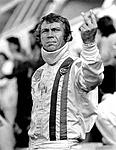
05-26-2010, 03:18 PM
|
 |
Backdraft Racing Dealer

|

|
|
Join Date: Dec 2004
Location: North Haven,
CT
Cobra Make, Engine: Backdraft Racing
Posts: 5,122
|
|

 Not Ranked
Not Ranked

Quote:
Originally Posted by FIA-ERA

Well Actually Pep Boys might have it right!
"In the 1980s the 302 became more commonly known as the 5.0 Liter, although its metric displacement (4942 cc) accurately rounds to 4.9 L. It is speculated[who?] that Ford used the "5.0" moniker to distinguish the 302 from the 300 cu in inline Six, which was known as the 4.9. Despite its advertised displacement, Car and Driver referred to the 302 – correctly – as a 4.9 liter engine."
HaHa!
Engine displacement is determined from the bore and stroke of an engine's cylinders. The bore is the diameter of the circular chambers cut into the cylinder block.
\mbox{displacement} = {\pi\over 4} \times \mbox{bore}^2 \times \mbox{stroke} \times \mbox{number of cylinders}
Examples: The 427 Chevy bore is 4.312 in, and the stroke is 3.65 in, therefore the displacement for this 8-cylinder engine is:
3.1416/4 * 4.3122 * 3.65 * 8 = 426.4 CID.
If the bore is 10 cm and the stroke is 5 cm with 4 cylinders, the calculation is:
3.1416/4 * 102 * 5 * 4 = 1570 cm3 ≈ 1.5 liters
Just for you Cashburn!
|
Like I said, he needs a math forum ... and you too!  |